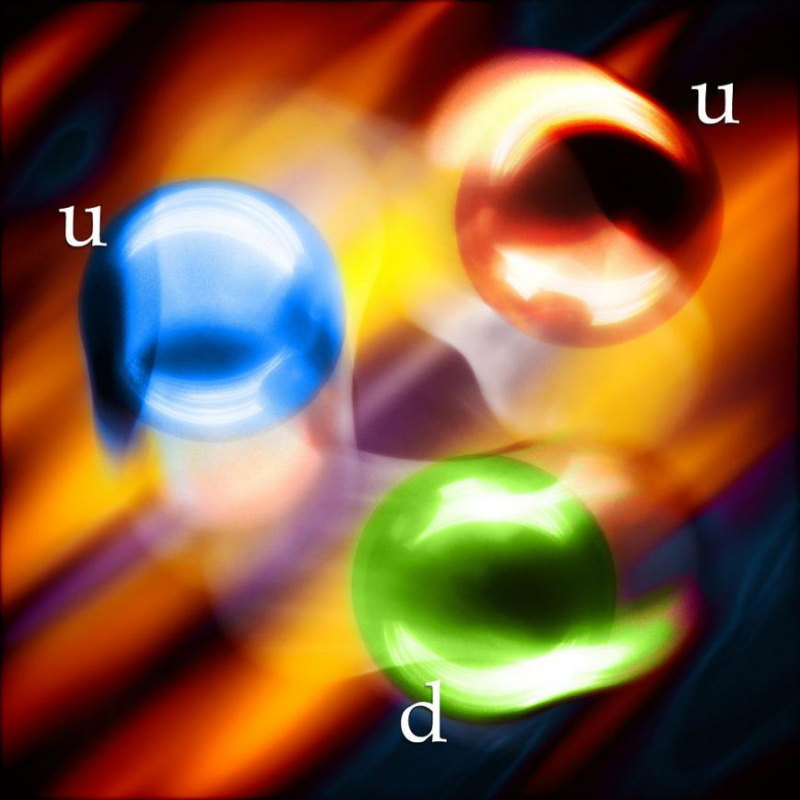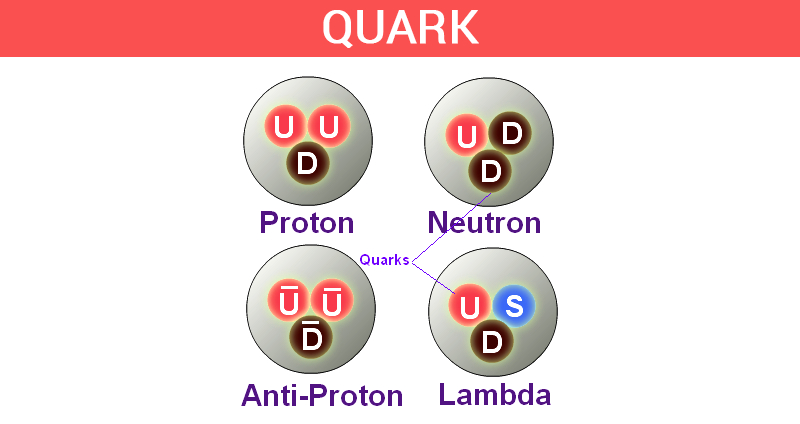Quarks
It makes sense to reduce the tetraquark to the basic quark since we previously discussed it. Quarks and gluons are produced during the breakdown of protons and neutrons, for example. Quarks come in six different varieties and are usually found in pairs. In reality, attempts to separate a quark from its other half by physicists have failed miserably. They either have a bond with one another or they don't.
Atomic mass results from interactions between quarks and gluons. That effectively suggests that quarks and gluons are the source of all mass in matter as we currently understand it. Quarks go beyond most particles, which are typically classified as having a positive, negative, or neutral charge. Additionally, they are said to have a color charge, which has a connection to a concept known as quantum chromodynamics. This uses the hypothetical hues of red, blue, or green to characterize their distinct quantum features even though these colors aren't actually present.
Composition: elementary particle
Statistics: fermionic
Generation: 1st, 2nd, 3rd
Interactions: strong, weak, electromagnetic, gravitation
Symbol: q












